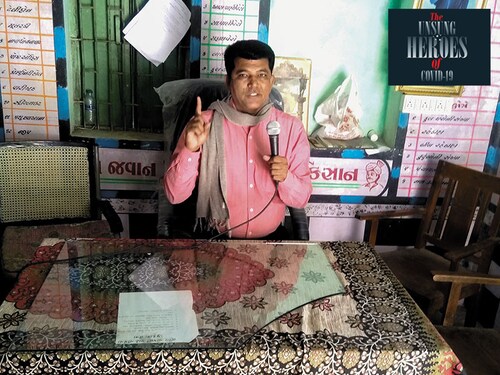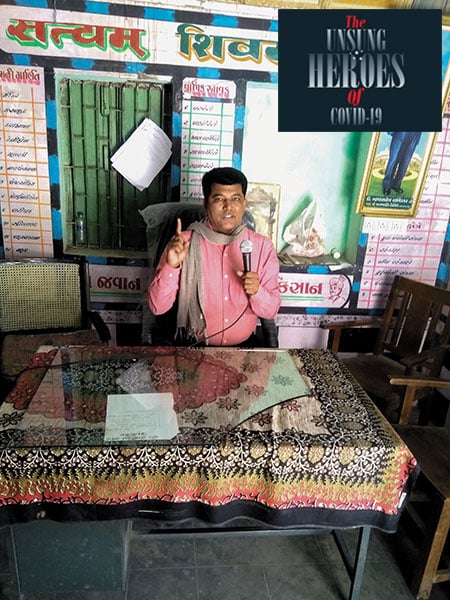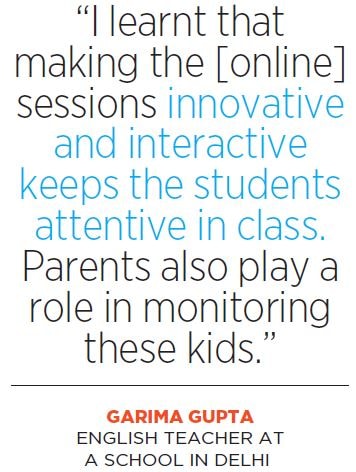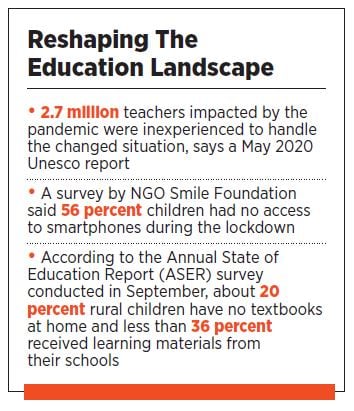Unsung Heroes: Shailesh Raval, and every teacher who prioritised learning
Teachers in rural and urban areas had to come up with innovative methods to ensure students did not miss out on an education during the pandemic


 At a government school in the Parpada village of Gujarat, Shailesh Raval teaches with the help of 20 loudspeakers installed across the hamlet
At a government school in the Parpada village of Gujarat, Shailesh Raval teaches with the help of 20 loudspeakers installed across the hamlet
Image: Shirishkumar Patel for Forbes India[br]About 150 kilometres from Ahmedabad in Banaskantha district of Gujarat, every morning when the clock strikes 8, a loud voice booms across loudspeakers in the village of Parpada. It’s 55-year-old Shailesh Raval instructing students to pull out their books and get ready for class. Raval’s daily routine has remained the same as it was before the pandemic—only, as schools across the globe went online, his classroom moved outdoors.
The teachers at the local government school in Parpada did not want their students’ education to suffer, so with the help of the head of the village, they set up 20 loudspeakers across the hamlet. “We visited each and every house and encouraged the students to join the loudspeaker class. We also requested their parents to sit with them while the class was going on to make sure their child did not get distracted and paid attention. Parents were quite supportive and thankful of this decision," recalls Raval who is the vice principal of the school and has been teaching the village students for 27 years now. The school has about 200 students.
Classes commenced in June and seven teachers head to the panchayat office one by one to teach the students from classes 3 to 8. They take six classes every day, with each class lasting half an hour. To make sure that the students are on the same page, teachers repeat instructions three times as the students, sitting at home or in a public space, listen.
Raval and the teachers do face some challenges while teaching through loudspeakers. “Teaching without making eye contact with the students becomes difficult at times. We don’t know if the students are able to understand what we’re trying to communicate. I teach mathematics and have to keep trying different ways to teach them, because this subject is tough to teach without a blackboard," says Raval, who invites the students to come and see him after school hours if they find it difficult to grasp the lessons. “A lot of students come to me to get their queries resolved. Despite all the challenges we are ensuring that the learning continues," he adds. 
To make sure students are paying attention, Raval at times randomly calls out a student’s name, which gets their attention and also makes them feel special since their names are being called out on a loudspeaker with the entire village listening in.
Teachers at schools in urban areas, where the transition from classroom to virtual learning has been more or less smooth, faced other challenges. It was a task to adapt to teaching online given that many of them were new to these technologies. They also had to redesign the teaching structure and syllabus from that of a traditional classroom to online. Keeping students engaged is a task wherever they are, and when they are not in a classroom, it’s a bigger challenge.
“It was a task to design effective teaching material to suit the new way of teaching and successfully implementing it to get the desired results," says Garima Gupta, 45, an English teacher at a leading school in Noida, Delhi, who has been teaching students online since April. “Students were excited as well as confused, and it was a challenge for us to control these inquisitive minds who aspired to explore and experiment," she adds.
Where teachers struggled with technology, it became difficult for them to take control of the situation, as students, making the most of the new experience, got up to mischief. “With time I learnt that making the sessions innovative and interactive helps keep the students attentive in my class. Also, one cannot deny the role of parents, who despite their own personal and professional challenges, monitor these kids. Yet at times, making these students switch on their camera is still a Herculean task," says Gupta, laughing.
First Published: Jan 06, 2021, 10:13
Subscribe Now